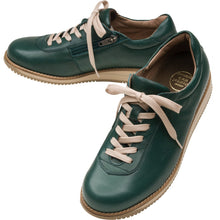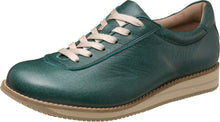


|
採用了易於分散、吸收膝關節所受衝擊的構造
When the heel strikes the ground first, the impact from the heel puts a load on the knee joint. The SHM® function relies on the elasticity of rubber to absorb impact. Moreover, the spiral structure can disperse the weight pressure and effectively reduce the burden. |
Inner thigh muscles that stabilize the knee joint The inner thigh muscle (vastus medialis) plays a role in stabilizing and protecting the knee joint when walking. The SHM® function that promotes the Screw Home Movement can effectively promote the activity of the inner thigh muscles and guide people to adopt the correct walking posture. [Patented] Patent No. 3992724/Korean Patent No. 10-0918230/Chinese Patent ZL200680010617.5/Hong Kong Patent HK1113065 *The spiral structure at the heel uses the elasticity of the rubber to bend the spiral when landing, thereby assisting the movement of the lower limbs. The spiral structure It does not rotate itself. *There will be individual differences in the wearing feeling after wearing the shoes and during use. *Asahi medical walking shoes are not considered medical equipment. *Quoted from "Photography from the perspective of functional anatomy: Lower limbs" by Eiji Ando |
Developed under the joint development of "industry, university, and medical care"!
Due to the current popularity of walking, more and more people are worried about knee joint problems. Asahi Corporation (company), with the cooperation of Kyushu University (university) and medical institutions (medical care), has developed the shoe function [SHM® function] to assist correct walking and prevent knee joint diseases. We have developed functional shoes that protect the body and can assist the original activities of the knee joint and prevent knee joint deformation and other diseases. ※According to a survey by the Cabinet Office, there are approximately 40 million people walking in Japan. Knee joint diseases vary from person to person and have various symptoms. According to reports, 10 million people suffer from knee joint diseases. If the reserve army is included, the number can reach 30 million (published in the University of Tokyo Hospital 22 Research content of the Comprehensive Research Lecture on Joint Disorders at Century Medical Center).
|









